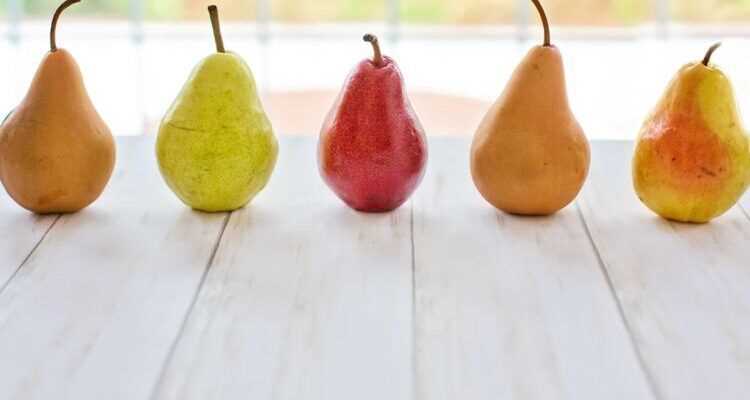2000 is the number of existing varieties, but only about ten are found on our shelves.
The Passe-crassane
In Rouen, in the middle of the 19th century, the nurseryman Louis Boisbunel designed this winter variety which aroused great enthusiasm among English, German and American horticulturalists. All were seduced by the passe-crassane, round, marbled yellow with juicy and subtly tangy flesh. Sold between January and March, with a peduncle covered with red wax to slow down its ripening, it remains excellent for several weeks, plain or in jam. But it is threatened: sensitive to fire blight, it has seen its reproduction prohibited in France, but not the sale resulting from existing plantations.
The conference
It owes its name to the first prize it won at the International Pear Conference in London in 1895. This elongated fruit, with green skin tending to bronze and thirst-quenching pulp, matures in October, but can be kept until the beginning of winter in a cold room. Well established in the North and in the Alps, this variety, which is one of the few to benefit from a protected geographical indication, goes well with savory dishes, such as pork, game or cheese.
The pear-melon

It is called that because its taste is reminiscent of the two fruits. In reality, Solanum muricatum is a plant from the Solanaceae family (tomatoes, eggplants, etc.), imported from South America by the Spanish conquerors, and has a fairly neutral flavor, close to that of water. It gives pale yellow balls streaked with purple that can weigh a kilo. It can be tasted as a juice.
The williams
It is the most cultivated pear in the world because its tree is self-fertile and resistant to disease. It would have been developed by John Williams, an English teacher, in the 18th century, and introduced in France in the 19th century where it quickly eclipsed its competitors. It is eaten plain, baked in pies, and it is the main ingredient in an eau-de-vie made in Loiret. But beware, this summer treasure, available from August to October, must be handled with care.
The Nashi

It is sometimes nicknamed apple-pear because of its roundness. The nashi, a brown sphere speckled with white, born in Asia, is mainly exploited in Japan, China and Korea. Not very widespread in France, it is easily found in North America, at the beginning of September, where it is often used in baking. Its crunchy texture and high water content are interesting to discover. It is eaten raw for dessert or in salads.
The Black of Worcester
It’s like the dark diamond of Worcester, in the west of England. This rustic pear, with a purple robe so deep it appears black, is featured on the county flag. Appeared in a monastery in the 14th century, it provided fruit to the inhabitants during the winter because it is harvested in October and keeps very well, without needing to be refrigerated. It could also be transported during military campaigns. On the other hand, it must be cooked because it is too bitter to be eaten as is.
The Alexandrine

She wears the name of a woman of character, "the one who protects men". Alexandrine was born in the middle of the 19th century, in the garden of the Nantes architect Constant Douillard, who named it after his wife. With its rounded shape, irregular contours and pale yellow skin tan tan on the sunny side, it stands out among the fall arrivals. Its firm and white flesh, very sweet, is delicious in compotes or crumbles.
Read also
⋙ Pear, the new slimming food?
⋙ How to ripen pears?
⋙ Rich in fiber, antioxidant: the 7 health benefits of pear
Article published in the issue Femme Actuelle Jeux Délices n ° 14 December 2020-January 2021
